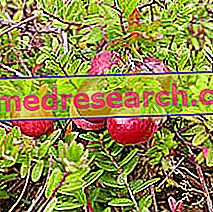Scroll down the page to read the summary table on lupins
| Lupini: introduction | Lupins are highly energetic legumes, entered in the Mediterranean diet at three hundred and sixty degrees |
| Lupini: nomenclature |
|
| Lupins: species of phytotherapeutic importance | L. albus, while L. littoralis, L. laxiflorus, L. termis and L. hirsutus, |
| Lupines: cultivation and dissemination |
|
| Lupini: botanical analysis |
|
| Lupini: nutritional evaluation | 114 kcal per 100 grams of product → energy vegetable 69% water 16.5% protein 7% carbohydrates remaining 6.5% divided between fibers and fats mineral salts: iron and potassium Moderate amount of vitamin B1 |
| Lupini: chemical composition |
|
| Alkaloids and lupins | Lupins must be consumed after cooking due to an alkaloid substance denatured by heat or with appropriate preparation processes: the wolf-toxin Future objectives → improvement and correction of the genetic profile of the lupine, in order to decrease the amount of alkaloids within the seeds |
| Lupini: food uses |
|
| Lupini: phytotherapic uses | In ancient times: lupini = good natural remedy to combat eczema and scabies Currently: lupini = vermifuge and anthelmintic (flour), diuretic, emmenagogue and aperitif, possible natural febrifuge |
| Lupins and celiacs | Lupins can also be consumed by celiacs because they do not form gluten |
| Lupini: future expectations | Lupine is also valued for its nutraceutical and medicinal properties that have emerged in recent years and are awaiting unequivocal confirmation:
|



